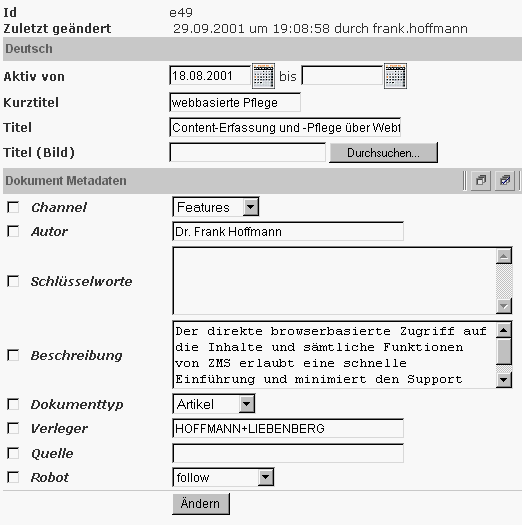Screenshot: input interface for the meta attributes of a document. Alternatively to the manual input there is a button [acquire] that permits inheritance of the attribute values of the parent object to the actual object.
Content enrichment by given categorising concept
The standardization of document attributes is one of the most important methods for effective content management.
The attribute values manage the presentation of the ZMS website and allow an efficient document retrieval.
